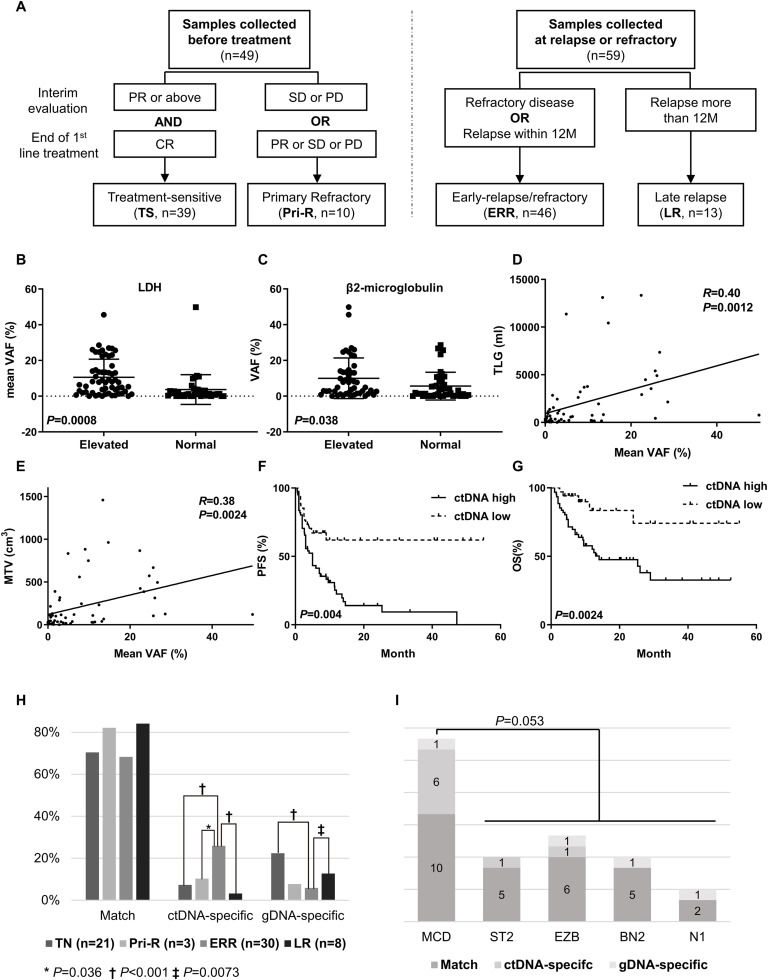
Genotyping on circulating tumor DNA improves mutation detection rate in high-risk diffuse large B-cell lymphoma


Diffuse large B-cell lymphoma (DLBCL) is the most common lymphoma with heterogeneous clinical outcomes. Patients who are primarily refractory to the frontline therapy or relapse less than 12 months after diagnosis have an extremely dismal prognosis.1 The heterogeneous clinical outcomes of DLBCL patients result from variable genetic profiles. However, the invasiveness of tissue biopsy often hampers the clinical application of genetic analysis. Circulating tumor DNA (ctDNA) is a non-invasive source of tumor genetic material. Rossi et al reported that pretreatment plasma ctDNA from DLBCL patients have >90% sensitivity and ∼100% specificity compared with mutations that were represented in >20% of the alleles of the tumor gDNA.2 Moreover, in patients with multiregional diseases, ctDNA mutations offer a comprehensive representation of tumor genetics, regardless of anatomical biases.
